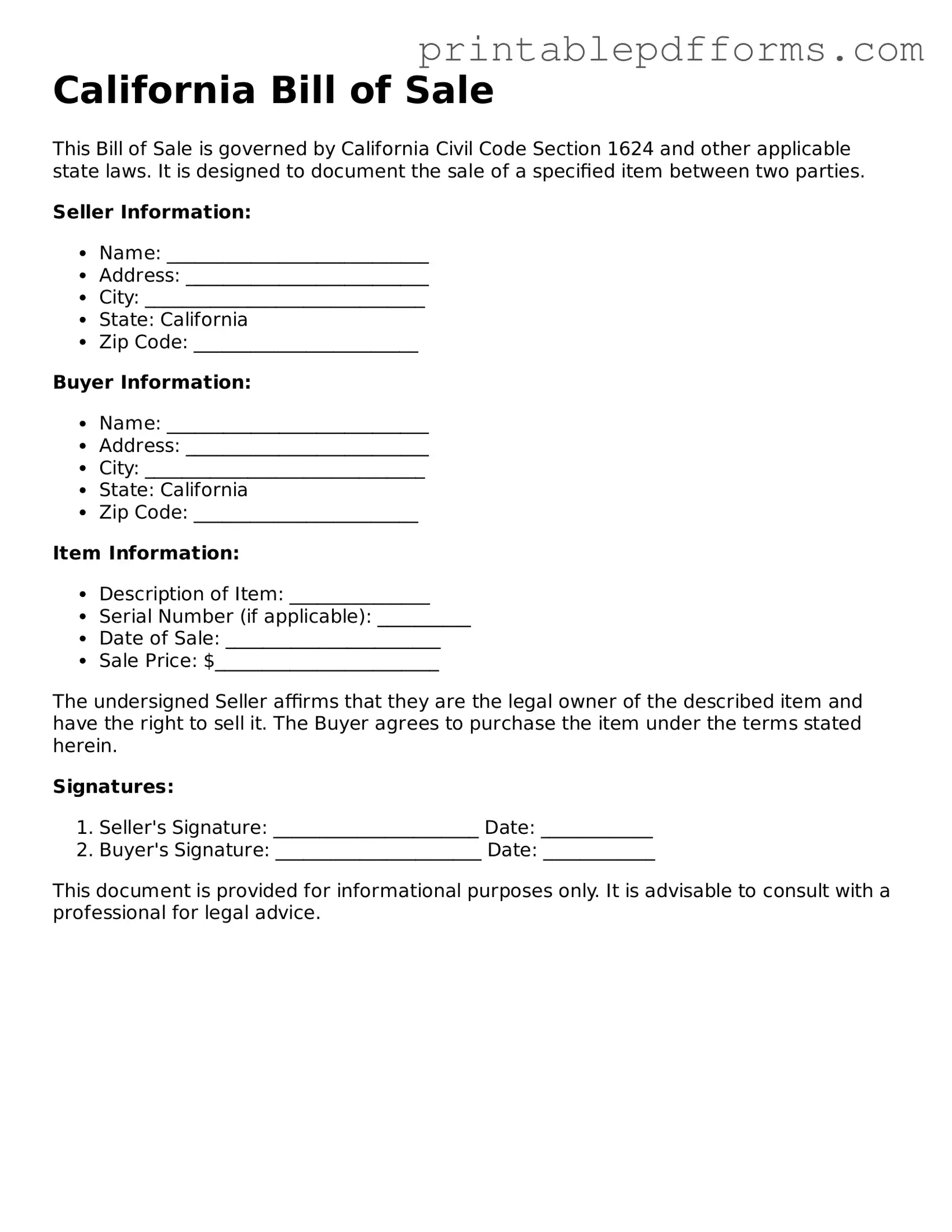California Bill of Sale Document
The California Bill of Sale form serves as a legal document that records the transfer of ownership of personal property from one party to another. This form is essential for ensuring that both the buyer and seller have a clear record of the transaction. To facilitate a smooth transfer, consider filling out the form by clicking the button below.
Create This Document Online
